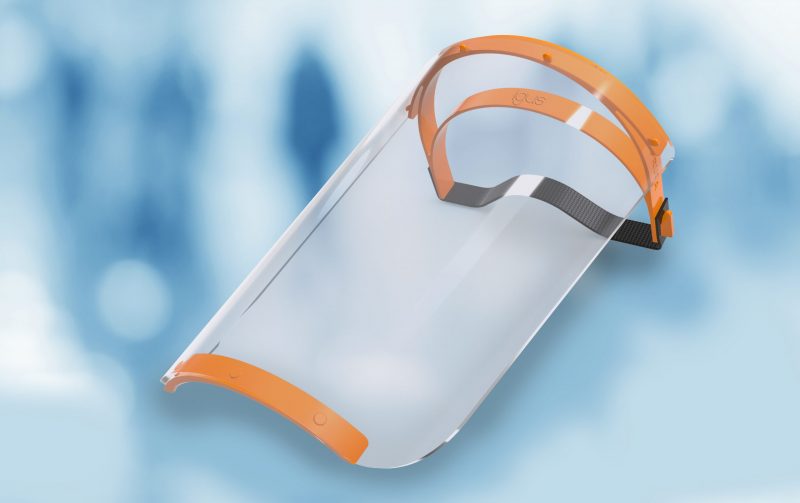Shield for protection against coronavirus
Thanks to injection moulding, more than 10,000 components leave a Cologne factory every week and accelerate aid for doctors and care workers.
At the moment, the protection of medical personnel is one of the most important challenges.
However, a sufficient amount of appropriate equipment of the necessary quality, is not quickly available on the market.
Solutions include face shields, which private persons and companies are currently making all over the world using 3D printing. igus has now applied itself to a central problem that such production is facing and is donating the first 100,000 head bands made with the injection moulding method.

At its Cologne facility, igus is producing head bands for face shields. Thanks to the injection moulding method, more than 10,000 parts can be made per week.
In order to protect doctors, nursing personnel and other people who work directly with patients, Prusa, a 3D printer manufacturer, has developed a face mask and placed the design on the Internet for downloading free of charge.
The aim is to produce the face shields on as many 3D printers as possible. The project is already regarded as a success in that individual people, maker networks and companies all over the world are participating in the scheme and are working flat out to additively produce the face shields. And initiatives such as “Operation Shields Up!” in the USA are bringing volunteers together on their platforms. igus GmbH is taking part in this worldwide collaborative project and is making use of the advantages of the injection moulding method.
Injection moulding enables cost-effective mass production of face shields
It is extremely easy to make a face shield: a 3D printed plastic strap holds a replaceable sheet of plastic film that shields the face. The face shield is not a substitute for a protective mask that covers the mouth; such a mask has to be worn additionally.
However, the face shields do provide additional protection, especially for the eyes. They also guard against the natural instinct to touch one’s face and thus come into close contact with the virus.
Despite the simple design, a central challenge remains. “Several makers asked us whether we, as a tribo-filament manufacturer, could provide them with material”, says Tom Krause, Head of Business Unit Additive Manufacturing at igus, looking back. “But that does not solve the real problem, which is that, if a 3D printer is used, production of the headband as a central component is comparatively expensive and takes more than two hours.
This means that only a few parts can be made per day.” This is why igus has decided to rely on the advantages of another method, namely injection moulding. Material recycled from iglidur A200 is used as the material.
Dr. Thilo Schultes, who is in charge of toolmaking, says “With the right tool, it is possible to manufacture and ship out more than 10,000 head bands per week from the Cologne factory. As a result, we are able to mass-produce the head bands quickly at considerably reduced costs.”
igus is manufacturing the tool at its own expense. The first 100,000 head bands are available free of charge, after which, they will be available at the cost of production. If net yields are achieved, they will be donated to a good cause.
www.treotham.co.nz



